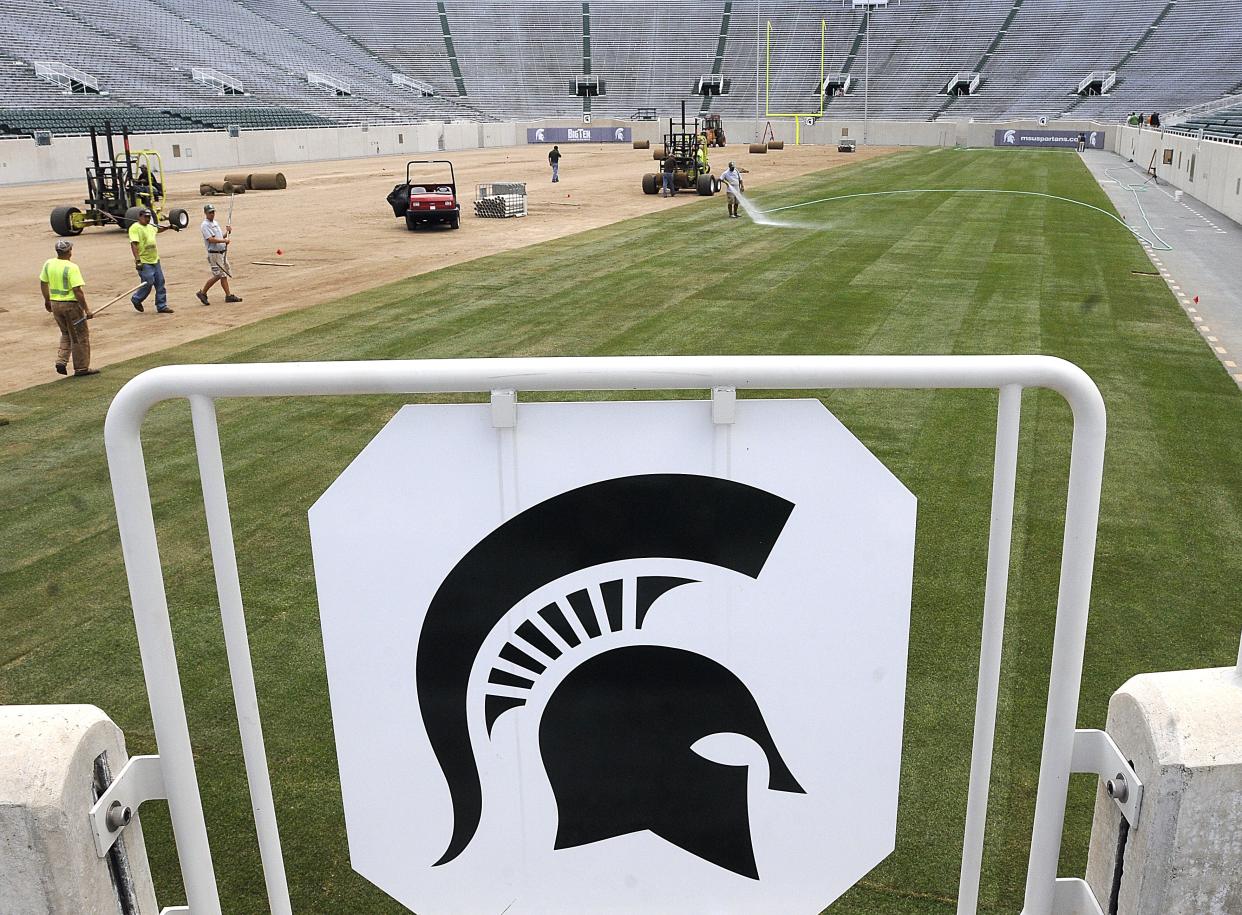Michigan State poised to partner with FIFA to make turf for '26 World Cup

EAST LANSING — The FIFA World Cup is returning to North America in 2026, and Michigan State University is hoping to make turf for more than a dozen stadiums hosting the world’s most-watched sporting event.
The Fédération Internationale De Football Association, also known as FIFA, is proposing to fund and build a turfgrass testing facility on MSU’s East Lansing campus in an agricultural district on Farm Lane, according to a memo from MSU Vice President for Strategic Infrastructure Planning and Facilities Daniel Bollman to the school's Board of Trustees.
The building will be available for MSU researchers and students to use at the end of the FIFA project, according to the memo.
Trustees will consider the proposal at their Friday morning meeting. They are scheduled to vote to authorize university administrators to enter into the agreements for the construction and financing of the turfgrass testing facility and to accept the facility as a gift once construction is complete, according to Bollman’s memo.
Bollman said in his memo that MSU and the University of Tennessee will be developing and providing natural grass playing surfaces for 16 North American stadiums and practice facilities as part of the 2026 FIFA World Cup. The work involves developing a turfgrass system that can be used in both domed and outdoor stadiums. while also making the grass playable for up to 60 days after it is installed.
MSU is known for its renowned turfgrass program, which over seven decades has boasted research programs involving golf courses, athletic fields and even home lawns, from construction to the management of the turfgrass.
Students participated in installing a temporary grass surface in the former Pontiac Silverdome for the 1994 World Cup.
When the World Cup returns to North America in 2026, it will become the largest sporting event ever held, Bollman said in his memo. The number of teams in the final is expanding from 32 to 48, which requires more stadiums and practice facilities.
If approved, construction of the turfgrass facility is expected to start in April and be mostly complete by June 2023, according to the memo.
Contact Mark Johnson at majohnson2@lsj.com. Follow him on Twitter at @ByMarkJohnson.
This article originally appeared on Lansing State Journal: Michigan State poised to partner with FIFA to make turf for '26 World Cup

